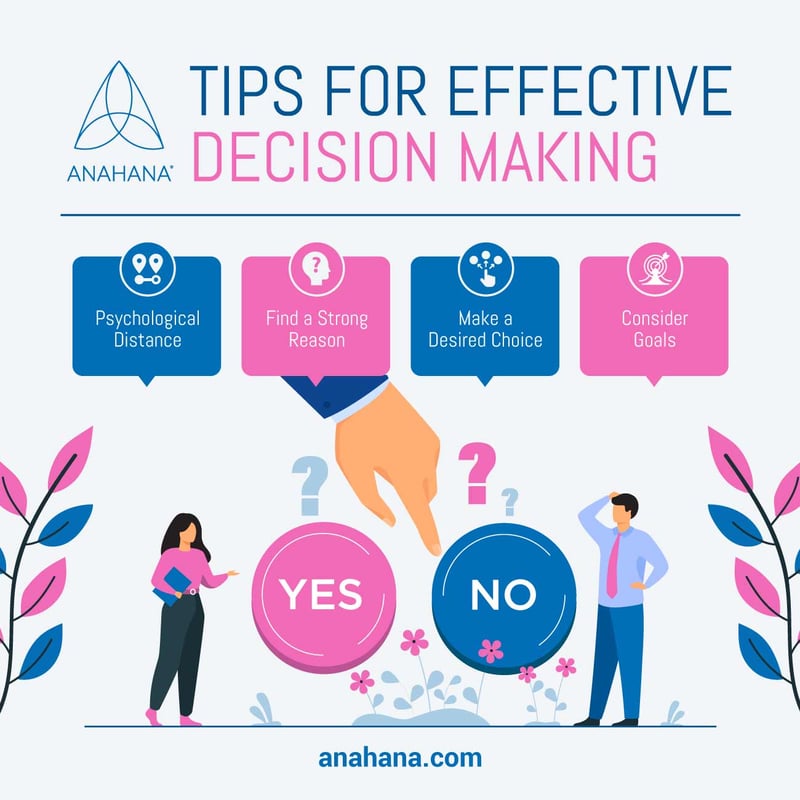
Table of Contents
Approach-avoidance conflict reveals the interplay between our desires and doubts, urging us to navigate the complexities of decision-making with care and introspection. As we confront the tensions inherent in choice, we are reminded of the nuances of the human experience.
Approach-Avoidance Conflict Defined
The approach avoidance conflict is a fundamental part of human behavior. It is like a quiet tug-of-war within ourselves, where our desires pull us one way and our fears push the other. Whether we are figuring out our careers, managing relationships, or just getting through the day, the balance between approach and avoidance shapes how we experience the world. For instance, proposing to a partner entails the fear of rejection alongside the hope for acceptance.
Approach behaviors drive us toward our aspirations, urging us to pursue what we truly want (known as behavioral activation). Meanwhile, avoidance behaviors kick in when we sense danger or foresee potential challenges, nudging us away from discomfort or uncertainty (behavioral inhibition). These responses are deeply rooted in our nature, serving to protect us from harm and keep us safe.
It is perfectly normal to have this conflict within ourselves. We all have moments where we wrestle with what we want versus what we're afraid of, weighing the risks and rewards along the way.
Resolution involves weighing priorities and consequences, considering short-term satisfaction versus long-term goals, exploring alternatives, and seeking external perspectives. By confronting tensions and aligning choices with personal values, we can navigate such conflicts with clarity and purpose.
The Role of Conflict in Personal Growth
Approach-avoidance isn’t merely a hurdle, it is a catalyst for personal growth and self-discovery. Picture yourself torn between two job opportunities: one promises stability but lacks passion, while the other ignites your soul despite its uncertainties.
By embracing this conflict, you dive into the depths of your desires, fears, and aspirations, gaining invaluable insights that steer transformative change and emotional maturity.
Reflect on a recent decision where you felt torn between two choices. What fears or desires surfaced during this conflict, and what did you learn about yourself in the process?
Self-Awareness
Approach-avoidance conflict is like standing at a crossroads, unsure of which path to take. It's that feeling when you want something but also fear its consequences. To make sense of these conflicting feelings, it is essential to cultivate self-awareness.
Mindfulness practices offer a research-backed approach to developing self-awareness when evaluating the positive aspects and negative aspects of our choices. Studies have shown that mindfulness meditation can modulate neural activity in brain regions implicated in emotion regulation and decision-making. By cultivating present-moment awareness, you can gain insight into the underlying motivations driving conflicting desires.
Picture a recent dilemma you faced: perhaps choosing between staying in your comfort zone or pursuing a new opportunity. Take a moment to center yourself. Close your eyes and focus on your breath. Notice the sensations in your body—the tension in your shoulders or the flutter in your chest. These physical cues are windows into your inner conflict.
As you deepen your self-awareness through mindfulness, reflect on how this newfound clarity can inform your decision-making process. By acknowledging and understanding your conflicting desires, you can make more informed choices aligned with your values and aspirations.
Vulnerability and Courage
Understanding the dynamics of approach-avoidance conflict requires us to delve into the intricate workings of our minds. Research in psychology suggests that it's not just a matter of making a decision; it involves complex cognitive processes and emotional responses. When faced with conflicting motivations, our brains activate different neural circuits associated with seeking rewards and avoiding threats.
But how do we navigate this internal conflict in a way that promotes personal growth and well-being? One approach is to embrace vulnerability and courage.
Embracing vulnerability means acknowledging our fears and insecurities without judgment. It is about being willing to expose our true selves, even when it feels uncomfortable or risky.
Imagine sharing a creative project or expressing your true feelings to someone you care about. It requires courage to be vulnerable, but it is often where genuine connection and growth begin.
Acknowledging our struggles and facing them with courage can lead to profound personal growth and a deeper sense of fulfillment in life.
Open Mindedness
Maintaining an open mind supports the creation of goals, and decision-making can sometimes take days as individuals weigh the advantages and disadvantages of each option. This prolonged decision-making process often leads to anxiety and tension.
Having an open mind can help in such situations as it encourages the exploration of new ideas and reacting accordingly. Open-mindedness is also an effective way to identify obstacles hindering achieving our goals and beliefs.
Clarity and Purpose
Approach-avoidance conflict often stirs up feelings of uncertainty, stress, and even anxiety, casting a shadow over our decision-making process. In these moments, it is essential to approach the conflict with a sense of awareness that guides us toward clarity and purpose.
Taking a positive yet objective stance means laying out all the facts of the conflict, much like spreading out a map before a journey. By examining each facet of the conflict and understanding how our decisions might ripple through our lives and surroundings, we gain a deeper understanding of the choices before us.
Aligning through Action
Taking decisive action is the cornerstone of navigating our internal conflicts and aligning with our deepest truths. When we understand our values, beliefs, and needs, we equip ourselves with the clarity and insight necessary to move forward with purpose.
By actively engaging in the decision-making process and weighing the potential outcomes, we empower ourselves to make choices that honor our authentic selves.
Through mindful action and conscious decision-making, we harness the power within us to influence and shape our own destinies and create pathways to fulfillment and growth.
The Wisdom of Fear: Making Friends with Decision Anxiety
When faced with approach-avoidance conflicts, we can often experience feelings of discomfort and anxiety. While we may intellectually understand the benefits of working through these conflicts for personal growth, the emotional toll can be significant.
It's not always easy to navigate these situations, especially when anxiety and self-doubt rear their heads in response to the discomfort. Despite our best efforts to rationalize, emotionally, it can feel like a different story altogether.
So, how can we build tolerance for the discomfort, anxiety, risk and uncertainty that accompany these ambiguous situations, where part of us is drawn toward something (approach) while another part wants to withdraw or avoid potential negative consequences?
The reality is that most decisions we face aren’t black or white; they exist in shades of grey. This mix of approach and avoidance often triggers fear, which we commonly label as anxiety.
Each of us has an internal 'anxiety' setting that responds differently to various situations. Some may feel comfortable and even confident in the face of anxiety, while others may find themselves paralyzed by it, steering towards avoidance behavior to temporarily reduce our discomfort, even when there is no actual threat to us (in more severe cases, or with anxiety disorders, this may be seen as a form of maladaptive avoidance).
This is where finding a balance becomes crucial. We need to ask ourselves how much fear, anxiety, or discomfort we're willing to tolerate in each situation. Avoidance gradients, which illustrate the spectrum of responses to different levels of discomfort or threat, offer insights into our emotional boundaries and guide us in making informed decisions that promote growth through exposure to uncomfortable (and safe) situations.
Here are some practical steps to work through these feelings, and move towards approach behavior, when it serves us:
-
Foster Curiosity: Replace some of the fear with curiosity by focusing on positive outcomes, opportunities for growth, and reasons why taking the chance is worthwhile
-
Recognize Your Limits: It's okay to step back from uncertainty when it feels overwhelming. Acknowledge that some things may cause too much fear, and that's perfectly acceptable. The goal is to gradually build tolerance over time rather than diving headfirst into discomfort
-
Acknowledge Your Feelings: Validate your feelings of anxiety and discomfort. Let them know that you hear them and that it's okay to feel this way
-
Incremental Exposure: Build confidence and self-esteem by slowly exposing yourself to uncomfortable yet safe situations. Each small step forward reinforces your ability to handle uncertainty and builds resilience over time
By implementing these strategies, we can begin to navigate approach-avoidance conflicts with greater clarity, resilience, and self-assurance, ultimately fostering personal growth and empowerment.
Other Tips for Effective Decision-Making

Approach-avoidance conflict, as explored in the previous section, often triggers discomfort and anxiety as we sort through conflicting desires and potential outcomes. In navigating this terrain, consider the following strategies rooted in the art of decisive action:
Define Your Priorities
Clarify your priorities and values to establish a clear framework for decision-making. By understanding what matters most to you, you can navigate conflicts with greater clarity and purpose, even in the face of anxiety and uncertainty.
Assess the Risks and Rewards
Conduct a thorough assessment of the risks and rewards associated with each potential course of action. Embrace the discomfort of uncertainty by exploring both the short-term and long-term implications of your decisions.
Indifference points mark the balance between the benefits and costs of pursuing a goal. Understanding them helps us make clearer decisions aligned with our values and aspirations. They're like guideposts along the path, reminding us to weigh our options thoughtfully before moving forward.
Trust Your Instincts
Learn to trust your instincts and intuition as valuable guides in the decision-making process. Acknowledge the anxiety that may arise and lean into your inner wisdom, recognizing that the answers you seek often reside within you.
Set Boundaries
Establish clear boundaries to protect your well-being and honor your values. Embrace the discomfort of setting boundaries, recognizing that saying no to conflicting opportunities is an act of self-care and self-respect.
Seek Support and Perspective
Don't hesitate to seek support and perspective from trusted friends, mentors, or advisors. Engage in open dialogue and active listening, embracing the discomfort of vulnerability as you gain insights from diverse viewpoints.
Take Action with Confidence
Once you've weighed your options and considered the available information, take decisive action with confidence and conviction. Embrace the discomfort of uncertainty as you move forward, trusting in your ability to navigate these complexities.
Embrace the Learning Process
Approach conflict as an opportunity for growth and learning. Embrace the discomfort of setbacks and challenges, recognizing the importance that each experience contributes to your personal and professional development.
By adopting these strategies, you can counteract the natural discomfort that may arise with greater clarity, confidence, and decisiveness, empowering yourself to make informed choices aligned with your values and aspirations.
Life After Decisions: Embrace the Process
As you navigate through the intricacies of approach-avoidance conflicts and make important decisions, it's crucial to understand that the journey doesn't stop once you've chosen a direction. In fact, it's just the beginning of a new phase filled with opportunities, challenges, and chances to grow.
Expect the Unexpected
After making a decision, it's natural to experience a mix of emotions, ranging from excitement and anticipation to doubt and uncertainty. Remember that it's okay to feel a bit unsettled as you embark on this next phase of your journey. Change can be both exhilarating and daunting, but it's often where growth and transformation occur.
Learn from Every Experience
Every experience, whether positive or challenging, offers valuable lessons and insights for personal growth. Embrace the opportunities for learning and self-discovery that arise along the way. Reflect on your successes and setbacks with curiosity and compassion, recognizing that each moment contributes to your journey.
Normalize the Ups and Downs
It's important to normalize the ups and downs that come with navigating life after decision-making. There will be moments of triumph and moments of doubt, moments of clarity and moments of confusion. Remember that life is a journey filled with twists and turns, and it's okay to embrace the uncertainty of the path ahead.
Find Support and Connection
During times of transition and change, seek support and connection from loved ones, mentors, or community resources. Surround yourself with people who uplift and inspire you, and don't hesitate to lean on them for guidance and encouragement along the way.
Trust in Your Resilience
Above all, trust in your resilience and inner strength to weather life's ups and downs. You've already demonstrated courage and determination in facing such conflicts. Trust in your ability to navigate whatever challenges may come your way.
As you move forward, may you find comfort in knowing that you are not alone and that every step you take brings you closer to your truest self. Embrace the journey, embrace the unknown, and embrace the incredible potential that lies within you.
Frequently Asked Questions
What is approach-avoidance conflict, and how does it manifest in our daily lives?
Approach-avoidance conflict occurs when individuals face situations where they are drawn to a goal or task but also experience fear or anxiety about pursuing it. In daily life, this might involve decisions like accepting a new job offer that excites you (positive valence or aligns with positive values) but also makes you anxious about change or financial instability (negative valence or negative values).
What are some common examples of approach-avoidance conflict in relationships?
In relationships, approach-avoidance conflict might arise when individuals desire intimacy and connection but also fear vulnerability or rejection. This tension can impact communication, commitment, and emotional closeness, inadvertently leading to self-sabotaging behaviors.
Similarly, individuals facing social anxiety or social anxiety disorder experience a similar conflict in social settings—they crave interaction and connection but dread judgment, embarrassment, or rejection. Consequently, they may hesitate to socialize, avoid events, or feel discomfort in social situations despite valuing their social health.
How do I recognize if I am caught in approach-avoidance conflict?
Signs of approach-avoidance conflict often show up as a sense of being pulled in different directions by competing desires or goals. You might feel a sense of unease or uncertainty when faced with important decisions and notice tendencies to avoid or delay taking action.
Consider this example: if you're sensitive to auditory stimuli like crowded rooms or busy streets, you might find yourself steering clear of such environments to sidestep feelings of overwhelm or anxiety, even if you long for social connection or exploration.
References
Approach-avoidance conflict | Wikipedia
Approach and Avoidance Motives and Close Relationships
Approach-Avoidance Conflict | iResearchNet
Approach-Approach vs Avoidance-Avoidance Conflict | Practical Psychology
Addressing Conflict Avoidance in the Workplace | Clear Review.
Disclaimer
The contents of this article are provided for informational purposes only and are not intended to substitute for professional medical advice, diagnosis, or treatment. It is always recommended to consult with a qualified healthcare provider before making any health-related changes or if you have any questions or concerns about your health. Anahana is not liable for any errors, omissions, or consequences that may occur from using the information provided.

By: Anahana
The Anahana team of researchers, writers, topic experts, and computer scientists come together worldwide to create educational and practical wellbeing articles, courses, and technology. Experienced professionals in mental and physical health, meditation, yoga, pilates, and many other fields collaborate to make complex topics easy to understand.
